Bristol Municipal Stadium
Introduction
Text-to-speech Audio
Images
Main entrance, 2011
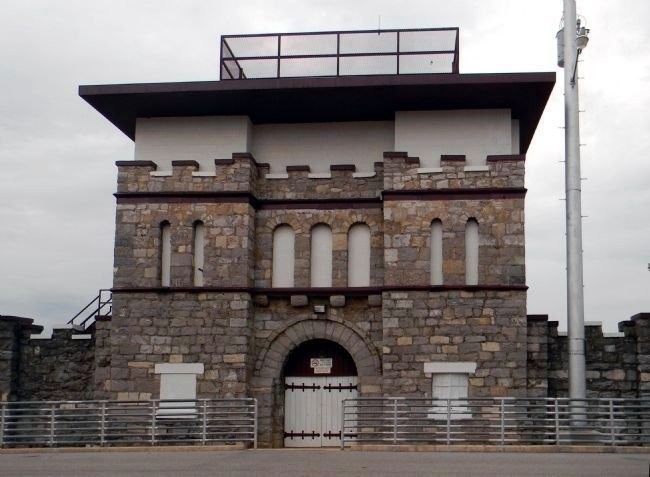
2011
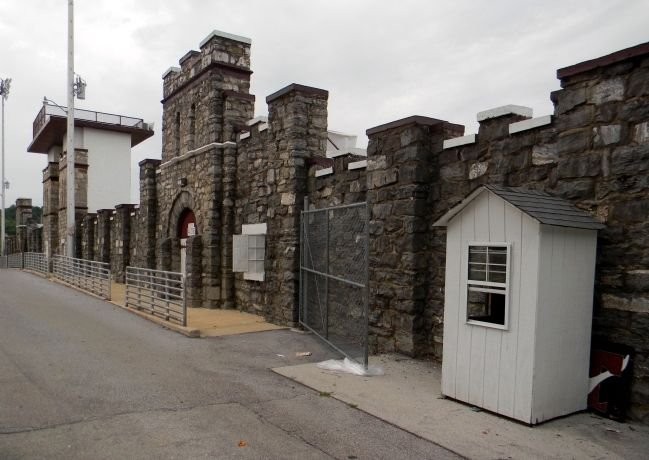
Stadium with historical marker, 2011
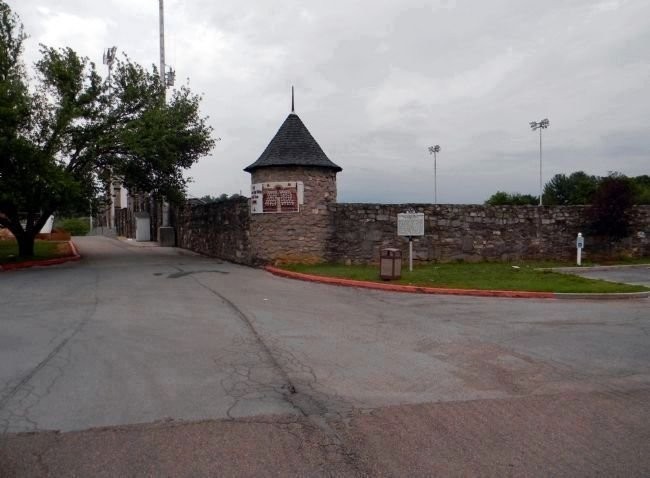
Historical marker, 2011
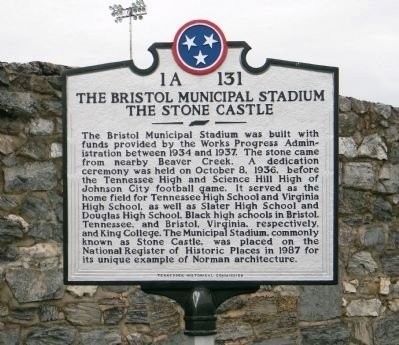
Inside stadium, 2010
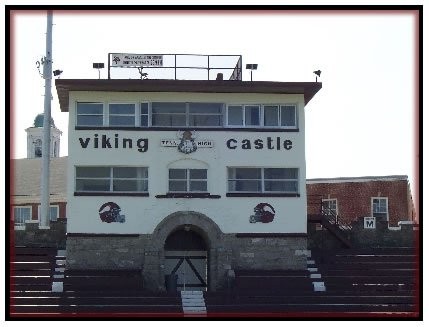
Inside stadium, 2010
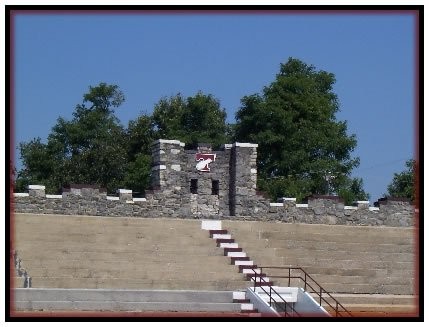
Inside stadium, 2010
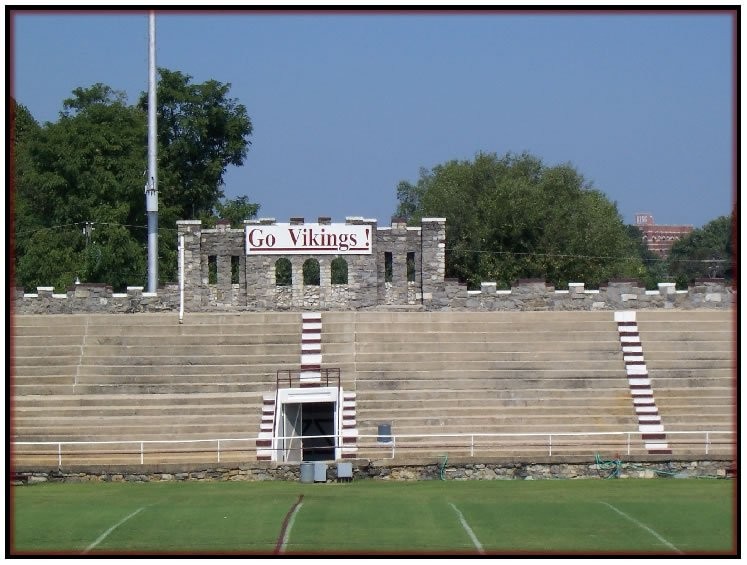
Field inside stadium, 2010
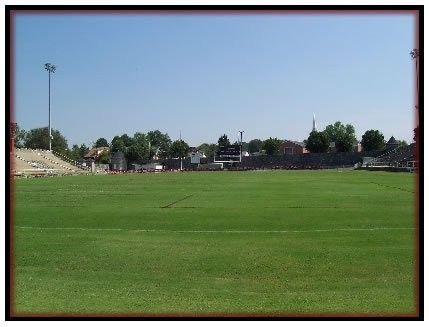
Castle-like structure, part of stadium, 2010
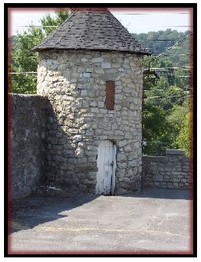
Castle-like structure, part of stadium, 2010
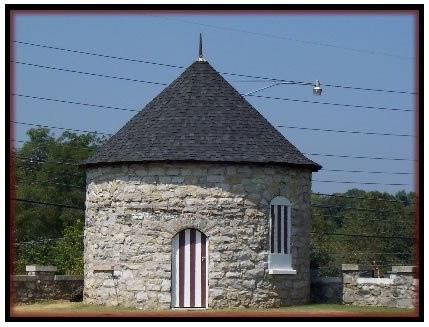
Backstory and Context
Text-to-speech Audio
Construction of the Bristol Municipal Stadium began in 1934 by the Tennessee Emergency Relief Administration. However, the construction was taken over by the Works Progress Administration in 1935 and mostly completed in 1937, at a total cost of about $34,000. Several other adjustments and renovations have since been made to the structure, though its outer appearance and general integrity remain remarkably consistent. In 1986, nearly 50 years after its initial construction and just one year before its inclusion in the National Register of Historic Places, the stadium was renovated as part of a $500,000 project.
The Works Progress Administration was an agency formed in 1935, during the Great Depression. It was formed by executive order as part of Franklin D. Roosevelt’s New Deal. The New Deal was Roosevelt’s response to national needs for various reforms, reliefs, and recoveries, including Wall Street reform, relief for the poor and unemployed, and the formation of the Social Security Administration. The Works Progress Administration was responsible for the construction of nearly 2,500 stadiums and grandstands across the country
The funding for the stadium came mostly from two major efforts by the Works Progress Administration, including one in 1935 and one in 1936. The initial funding in 1935 was for the construction of a stone stadium with a capacity of 4,500 individuals. In 1936, funding was awarded for an additional 1,500 seats inside the stadium, increasing its total capacity to roughly 6,000 people.
The stone used to construct the building was the product of another project in Bristol made possible by federal funding. The flood control channel at Beaver Creek, from which the stones were harvested, was at the time still being constructed by the Civil Works Administration. Additionally, several other schools in or near Bristol and Sullivan counties were also constructed by the Works Progress Administration, including Central School and Rosemont School.
The stadium’s architect was a man from New Orleans named Reginald Vlademar Arnold, who was educated at Tulane, and worked, lived, and died in Bristol Tennessee. He also served as the char of the Tennessee Chapter of the American Institute of Architects. Having spent about a year-and-a-half in Europe as a Lieutenant during World War I, it is believed by some experts that Arnold may have been inspired by the architecture he witnessed and experienced while overseas. Some features of the Bristol Stadium which may be indicative of such inspiration include its crenelated walls, towers, and large wooden doors often associated with castles.
Today, the stadium serves its community as a venue for various gatherings and events for several different groups and purposes in Bristol.
Cite This Entry
Harding, Douglas J. "Bristol Municipal Stadium." Clio: Your Guide to History. August 3, 2019. Accessed January 22, 2025. https://theclio.com/entry/83486
Sources
"Bristol Municipal Stadium." Historical Marker Database. 16 June, 2016. 17 July, 2019. https://www.hmdb.org/marker.asp?marker=45941.
"Bristol Municipal Stadium - Stone Castle - Bristol, TN." Waymarking. 13 May, 2009. 17 July, 2019. http://www.waymarking.com/waymarks/WM6CCW_Bristol_Municipal_Stadium_Stone_Castle_Bristol_TN.
Edgar, Justyn. "Stone Castle at Tennessee High School." Internet Archive. Spring 2010. 17 July, 2019. https://web.archive.org/web/20131221005107/http:/www2.btcs.org/ths/StudentLife/castle/index.htm.
"Historical Markers Database." Herald Courier. 9 January, 2018. 17 July, 2019. https://www.heraldcourier.com/historical-markers-database/table_4a8bbe16-f54e-11e7-8a5a-53adecf20e65.html.
Stager, Claudette. "Bristol Municipal Stadium." Society of Architectural Historians. 17 July, 2019. https://sah-archipedia.org/buildings/TN-01-163-0062.


